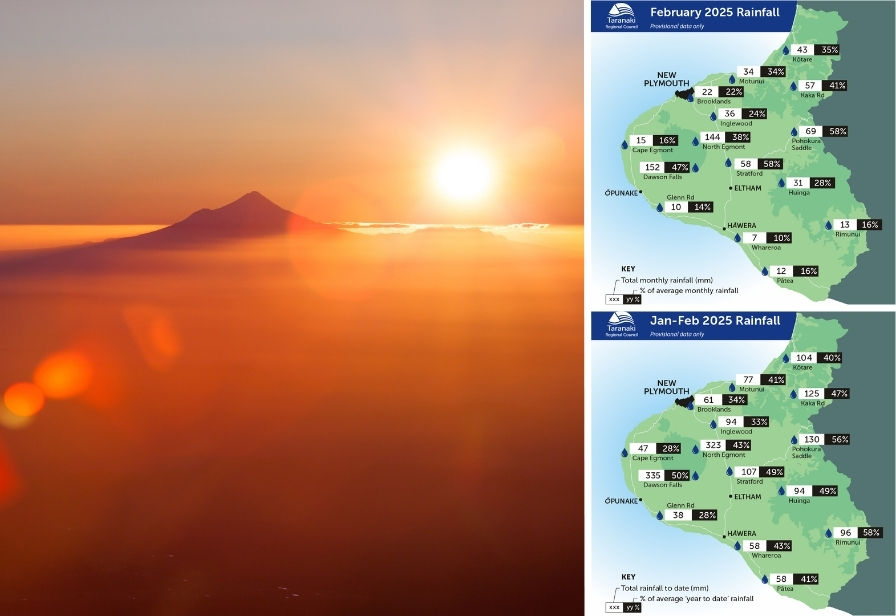A review of Taranaki’s water resilience and security is being undertaken by Taranaki Regional Council after the region was hit by a severe drought this summer.

Many areas in South Taranaki experienced extremely low rainfall in January and February 2025.
Working with the three district councils, government agencies, Venture Taranaki and other stakeholders, the Council study will identify how to better understand the current and future demand for water in the region.
Taranaki had one of its driest summers ever in 2024/25 with some areas receiving less than half of the usual rainfall and climate change is expected to exacerbate water availability for homeowners, businesses and farmers.
Council Director of Environmental Quality Abby Matthews says the review will examine the availability of surface water in rivers, streams and lakes and groundwater sources and how this is used.
“This summer's drought put water security front and centre when South Taranaki in particular experienced extremely low rainfall over several months,” says Ms Matthews.
“Water security and resilience will remain a major issue for our region as our climate changes so it’s vital we get more information to assist our work supporting livelihoods.
“The rural community is quite rightly concerned about the availability of water, so we’ll be reaching out to tangata whenua and working with the three district councils, central government agencies and stakeholders to scope out a work programme and identify the next steps we need to take.”
The regional council is already reviewing its climate and river flow networks as part of an assessment of its flood monitoring and warning systems. This will be expanded to include soil moisture monitoring to improve indicative data around droughts.
Factors impacting water resilience include current and future water use, water conservation, regional development and water storage, technology and alternative management options.
“With climate change altering our weather patterns and likely to bring warmer, drier summers for parts of Taranaki, we need to understand what demand there is for water and its availability,” adds Ms Matthews.
“This will help inform future discussions about freshwater management and will tie in with future planning for the region.”